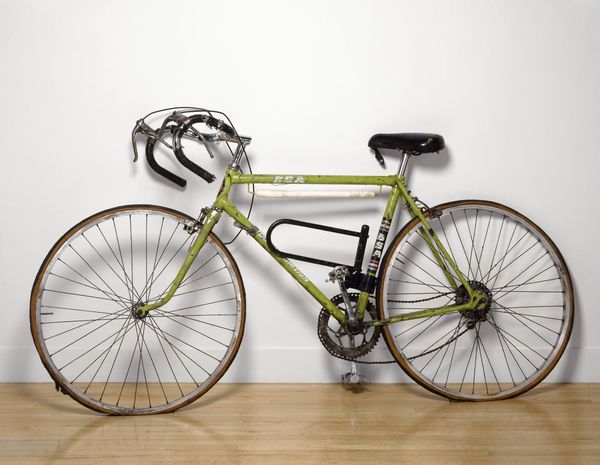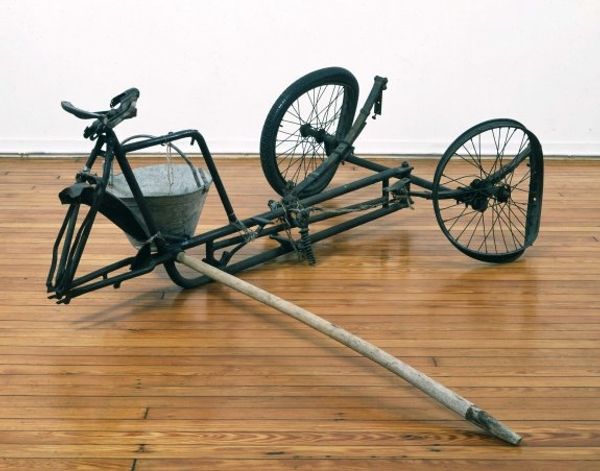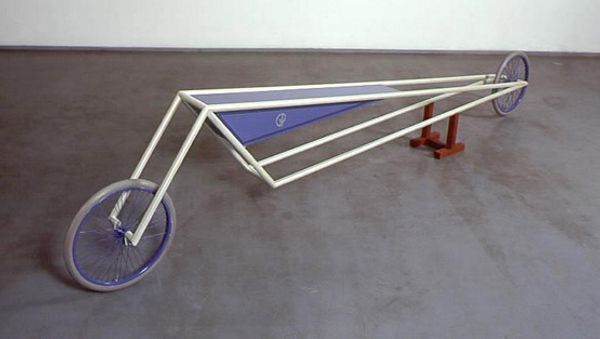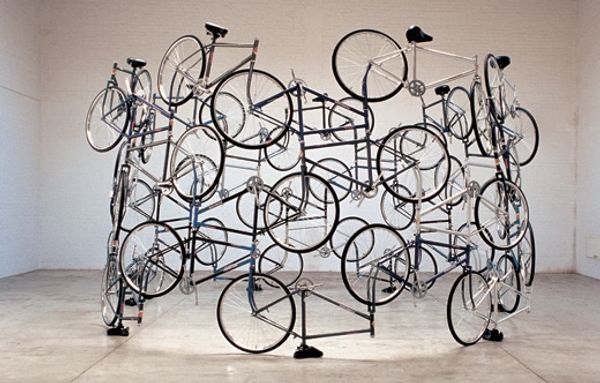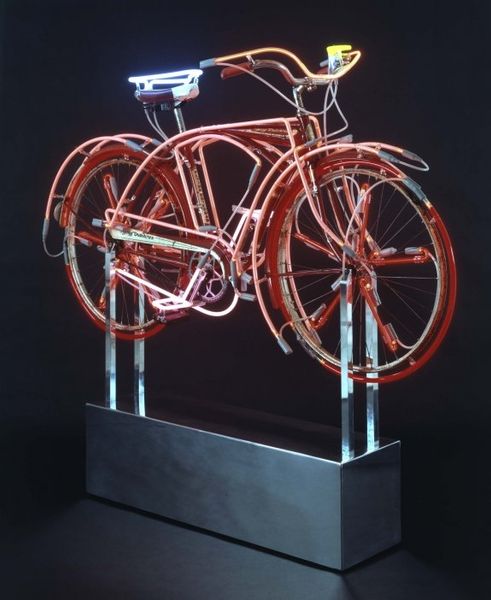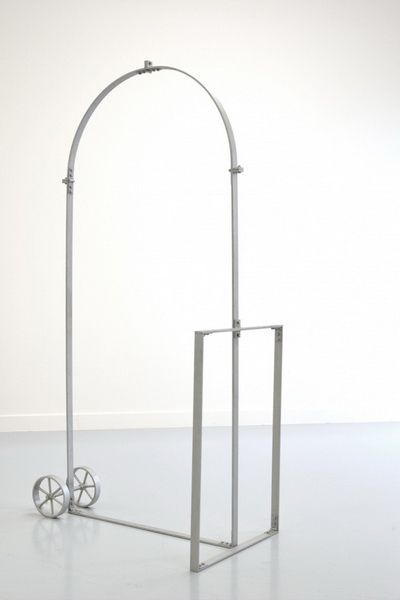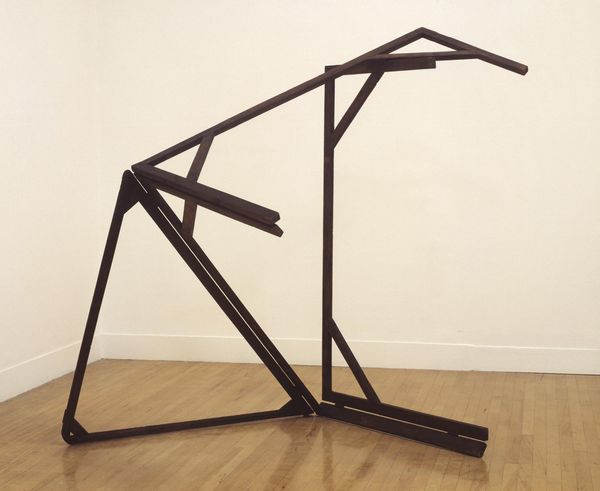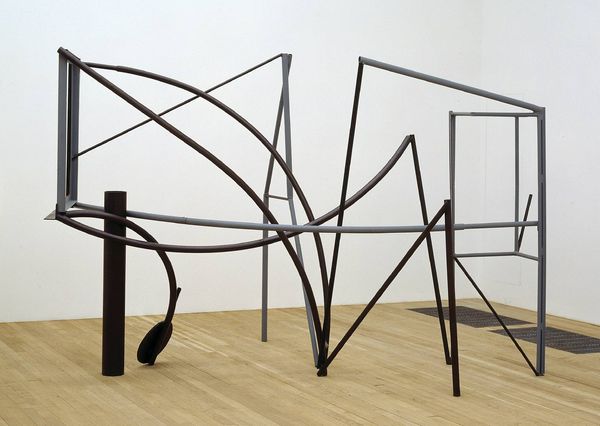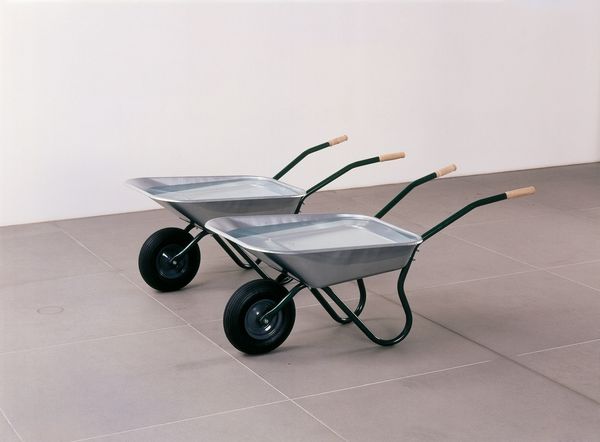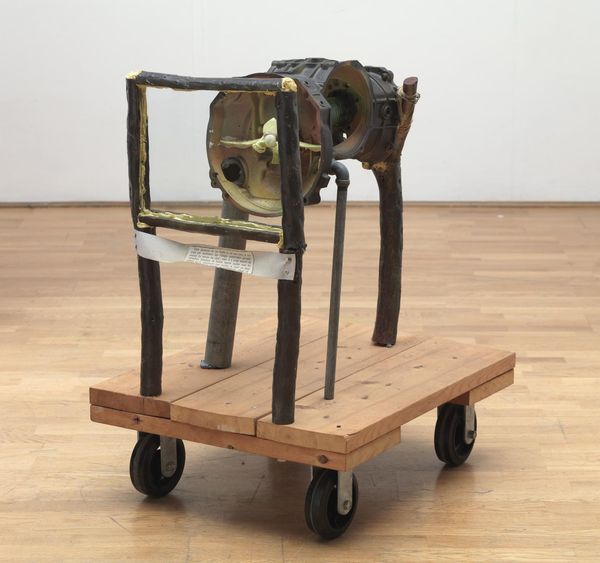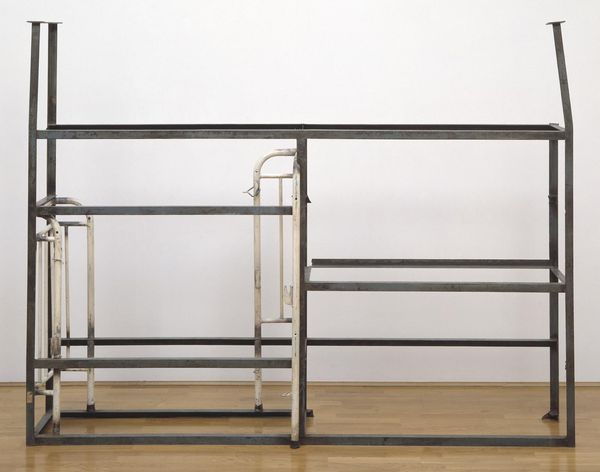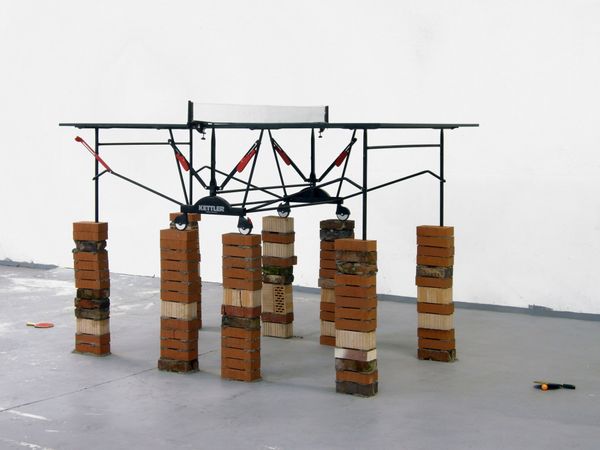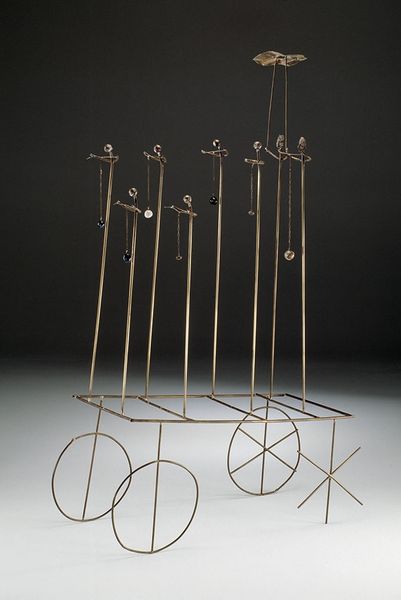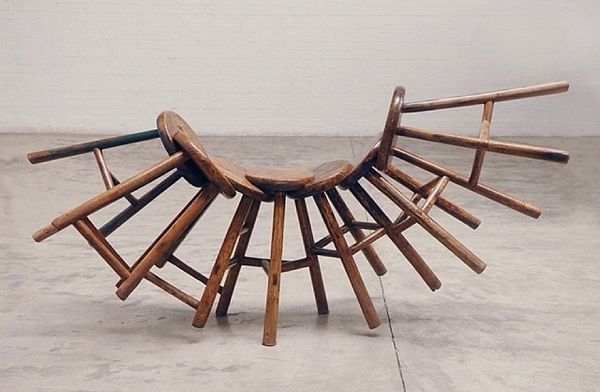
Dimensions: object: 1240 x 4050 x 550 mm
Copyright: © Simon Starling | CC-BY-NC-ND 4.0 DEED, Photo: Tate
Curator: Well, that's… quite a bicycle. Simon Starling’s "Five-Man Pedersen (Prototype No. 1)" is certainly a sight to behold. Editor: It's comically elongated! The sheer size makes me think of shared labor, of collective action. A bit unwieldy perhaps, but also suggests collaborative effort. Curator: The materiality is fascinating. Starling uses a traditional bicycle design, the Pedersen, and extends it to this impractical length. It speaks to the history of craft, the ingenuity of adapting a proven design for… well, something else entirely. Editor: Exactly! And who is this "something else" for? Is it a commentary on economies of scale, or perhaps a symbol of how communal efforts often become cumbersome? What about the environmental impact of production versus the potential for sustainable transportation? Curator: It's about the journey, not the destination, I think. The making, the process, is the point. Highlighting the absurdity while also honoring the skill involved in bending metal and fitting components. Editor: I see that, but its physical presence demands we think about the bodies that would occupy it, the social dynamics at play. Imagine five people trying to coordinate on this thing! Curator: A beautiful, collaborative… sculpture. Editor: Indeed. A thought-provoking object.
Comments
tate 7 months ago
⋮
http://www.tate.org.uk/art/artworks/starling-five-man-pedersen-prototype-no1-t11819
Join the conversation
Join millions of artists and users on Artera today and experience the ultimate creative platform.
tate 7 months ago
⋮
Simon Starling is fascinated by the origins of materials and the processes by which they come to be developed and transformed into things. His works involve historical connections between the activities of discoverers, designers and artists, which he traces back and forth through time, following the processes of things being made from conception to completion. Often this involves travelling to other countries or sourcing and manufacturing materials from obscure and far-away places. His deconstructions and reconstructions of found objects have introduced him to a range of such craft techniques as model-making, lampshade-construction, cabinet-making, metal-work, erecting a log cabin and boat-building. Starling uses these techniques inventively, crossing design areas by taking apart an object like a Charles Eames chair and reforming it into a Marin Sausalito bicycle and vice versa. Starling’s practice combines the tradition of the British explorer – intrepidly venturing into obscure places – with the persona of an eccentric inventor. Such processes as taking apart a wooden boatshed, making a boat from part of it in which he ships the rest of it to another venue where it is reconstructed to form the finished work, Shedboatshed (Mobile Architecture No.2) 2005 (neugerriemschneider, Berlin), encapsulate a kind of poetic logic. Many of Starling’s works develop, through a series of diverse processes, into hand-made versions of design classics and other industrially produced things from the Modernist era. Although they resemble the original objects they usually combine other elements, extending the frame of reference to a wider sphere.
